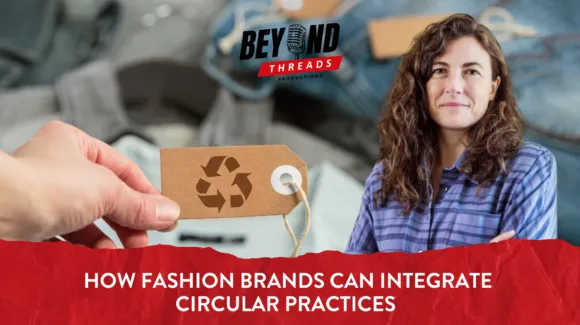How can Digital IDs enable a more sustainable fashion industry?
Digital IDs provide customers with detailed information on how to care for and repair their garments, the origin of the raw materials used, the conditions under which they were produced and the authenticity of the items they have purchased. By providing greater transparency and insight into garment supply chains, Digital IDs can help minimise unsustainable practices in the fashion industry and catalyse circular business models.
In the last of our blogs on the role of data in fashion and circularity, we discuss practical solutions for creating a robust data-sharing ecosystem for circular fashion – and how Bleckmann is helping clients use digital product IDs to achieve their sustainability goals.
How to optimise data sharing in a circular economy for textiles
One key question is how to ensure compatibility between Digital ID systems. If platforms are developed in isolation, this could lead to mismatches between data standards, preventing the seamless data exchange that Digital ID promises. Our industry needs Digital ID systems that offer complete compatibility and interoperability.
Creating this universal network, with shared, coherent standards and requirements, will be crucial in ensuring a viable future for the circular economy. This is the goal of the Circular Product Data Protocol™, led by technology expert, EON. The aim is to build a ‘shared language of circularity’ by creating a framework for Digital IDs that enables cross-value chain compatibility.
Is there a universal circular data-sharing framework for fashion?
Many companies are part of this initiative, including H&M Group, Microsoft, Target in the US and… Bleckmann! We’re proud to be part of developing this protocol, which will be essential in facilitating circular business models such as reselling, renewal and rental. And we can’t wait to see more fashion and lifestyle brands joining this kind of programme.
The Circular Product Data Protocol™ is open source, so any company can use it to integrate greater transparency into their value chain. It allows consumers and value chain partners to trace products from the raw material source to the store where they were sold – and resold! And the more companies that adopt these frameworks like these, the more we all benefit.
Want to find out more about circular fashion solutions?
Why not talk to one of Bleckmann’s circular fashion experts today? We’d be happy to discuss how your brand can make the most of circular business models.
You can also find out more about Bleckmann’s circular solutions here.
Solutions
Freight Forwarding
By air, sea, road and rail, we deliver your products where they need to be.…
Logistics & Fulfilment
Every customer expects a quick, reliable and high-quality service. Our core…
Circular Solutions
All unsold, returned or damaged items can go through a circular system to…
Distribution
A full range of international distribution services to create exceptional…













